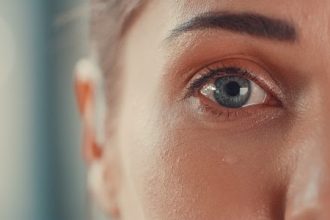A pistol grip is a handle that helps you hold and shoot a gun more easily. It is found on the part of the gun you hold with your hand. This grip makes it comfortable to use the gun and aim more accurately.
A pistol grip is an essential component of a handgun, as it plays a vital role in the overall handling and performance of the firearm. In this article, we will discuss some tips and techniques for improved accuracy.
Dominant Hand Placement
Proper placement of your dominant hand is crucial for good firearm handling. This means putting your hand so it fits snugly around the pistol grip, with your thumb resting comfortably along the side of the gun. Your index finger should be free to pull the trigger without moving the gun.
To maintain control and improve accuracy, make sure your grip is firm but not too tight. A tense hand can make the gun shake, leading to less accurate shots. Practice holding the gun with a relaxed, yet controlled grip to become more skilled at shooting.
Support Hand Integration
Integrating the support hand is a key part of the grip technique that makes shooting safer and more accurate. Place your support hand under the grip, wrapping your fingers around the front of the dominant hand. This helps control the gun during recoil, making it easier to stay on target.
Your thumbs should lie flat against one another, pointing forward. This position prevents them from interfering with the slide of the gun or affecting your aim. Practicing this method will lead to better stability and accuracy when shooting.
The goal is to make both hands work together as one unit. A good support hand grip increases your control over the firearm. With time and practice, this approach will significantly improve your shooting performance.
The Importance of Pressure
Applying the right amount of pressure with your hands is key to pistol accuracy. When you grip the pistol too hard, your hands might shake and mess up your shot. But if your grip is too light, the gun can move too much when it fires.
To achieve the ideal pressure, focus on using your entire hand and fingers to hold the gun firmly but not too tightly. This way, you’ll have more control over the firearm’s movement and improve your ability to aim precisely.
Practicing the right pressure makes shooting more consistent. Over time, your hands will learn just how much force to use. With each practice, aiming and hitting your target will get easier, improving your pistol accuracy.
Thumb Placement Techniques
For better firearm handling, thumbs play a big part. Place your shooting thumb (the one on your dominant hand) along the side of the gun, making sure it doesn’t touch any moving parts. This helps you keep the gun steady and aim more accurately.
Your other thumb, the one on your support hand, should also lie along the side, parallel to your shooting thumb. This way, both thumbs point forward and don’t get in the way of the gun’s slide. Practicing this thumb placement will make shooting feel smoother and help you hit your target more often.
Keeping your thumbs in the right spot makes it easier to control the gun when it kicks back after shooting. It’s a small detail, but it makes a big difference in how well you can shoot. Over time, getting your thumbs right will become a natural part of your shooting routine.
Managing Recoil
Managing recoil is all about controlling your gun when it kicks back after a shooting. To do this, keep your arms steady and push forward slightly against the gun’s backward motion. This will help you keep the gun steady and ready for the next shot.
A good stance also makes a big difference in handling recoil. Stand with your feet shoulder-width apart and lean slightly forward. This way, your body can absorb the recoil better, making it easier to control the gun.
Practicing with your gun will help you get used to the recoil. Start with smaller calibers and work your way up. This way, you’ll build confidence and skill in controlling your firearm, no matter how much it kicks back.
Use quality Pistol Grips
Using quality pistol grips can make a big difference in how you shoot. A high quality angled foregrip, for instance, helps you hold your gun more comfortably and shoot more accurately. This kind of grip allows you to aim better because it gives your hand a natural position to rest.
When you choose a good grip, your shooting can improve a lot. It feels better in your hand, making it easier to control the gun during recoil. Plus, a good grip can last a long time, so you don’t have to replace it often.
Look for grips made from strong materials that fit your gun perfectly. The right grip should feel like it’s part of the gun, not something added on. Remember, investing in a good grip is investing in better shooting.
Adjusting for Different Firearms
Adjusting to different firearms is like getting used to driving different cars. Each gun has its own feel, weight, and way of shooting, which means you need to practice with each to shoot well. Start by holding the new firearm, checking its balance, and getting comfortable with its grip and controls.
When switching guns, remember that the basics of good shooting still apply. Focus on your stance, grip, and aim, but be ready to adapt these for the firearm’s unique features. Practicing regularly with each gun will build your confidence and improve your accuracy over time.
Perfecting Your Pistol Grip: The Path to Precision Shooting
Mastering the pistol grip is key to becoming a precise shooter. It’s about finding the right balance, using both hands together, and staying comfortable while you aim and shoot. With practice, the grip will feel natural, and hitting your target will become easier.
Remember, the way you hold your gun affects your accuracy a lot. A good pistol grip helps you control the gun when it kicks back after firing. Keep practicing, and you’ll see your shooting skills improve over time.
If you find this article helpful, you may visit our blog for more content.















